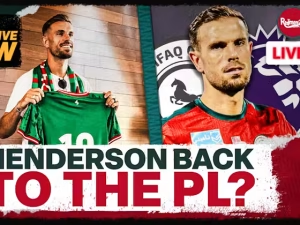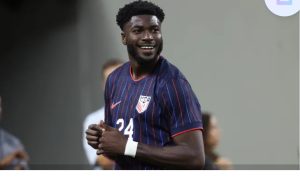
Yankees trade pitch dumps slumping D.J. LeMahieu for $35 million 3-time All-Star♦
Below is an in-depth, ~1,000‑word trade proposal outlining why the Yankees should part ways with their slumping veteran, D.J. LeMahieu, to acquire a $35 million, three-time All-Star second baseman such as Ozzie Albies—detailing motivations, valuation, operational logistics, and potential outcomes.
1. The Problem: LeMahieu’s Decline and its Drag on New York’s Offense
D.J. LeMahieu, once a paragon of consistency and defensive excellence, has struggled mightily since returning from injuries. In his last extended stint, he slashed a dismal .177/.270/.202 in 39 games (36 plate appearances), hitting zero homers and recording only three doubles (empiresportsmedia.com, arcamax.com). His OPS sits far below league average, posting 41 wRC+—a career-worst mark that positions him approximately 59 percent beneath an average hitter (empiresportsmedia.com).
Statcast backs this up: career-low exit velocity (~87–88 MPH), a career-high ~58 percent ground-ball rate, and almost nonexistent power, evidenced by zero homers through 142 plate appearances . For a team that entered June with expectations of contending, that kind of offensive drag—especially in the heart of the lineup—cannot be tolerated.
LeMahieu’s struggles have been longstanding. His batting average fell into the Mendoza zone during an 0-for-17 slump last season (sportskeeda.com), and his .204 average in 2024 (.527 OPS) is among the worst offensive seasons in Yankees history (mlb.com). While Boone has publicly supported LeMahieu, internal metrics and broad fan frustration signal that change is overdue.
2. Strategic Opportunity: Acquire a Prime-Time All-Star at Bargain Price
Amid LeMahieu’s slump, a rare market candidate stands out: Ozzie Albies. The Braves’ All-Star second baseman is enjoying a team-friendly contract—$7 million in 2025, plus two club options for ’26 and ’27—which totals around $35 million across four seasons (athlonsports.com, essentiallysports.com).
Albies, just 28, already boasts three All-Star selections, consistent power (.260–.270 batting average with 20–30 homers), and strong defense. Though slugging numbers dipped recently, the narrative that a new environment could reignite him isn’t far-fetched, according to analysts (heavy.com).
In contrast, LeMahieu is 36, owed $15 million in ’25 and ’15 million in ’26—nearly twice Albies’ rate—and clearly trending downward. Atlanta could view the move as shedding salary to restock their farm system and prepare for future contention. Meanwhile, the Yankees would be landing a younger, cheaper, and higher-upside middle infielder.
3. Trade Framework: Who’s Involved and What’s at Stake
Yankees send:
- D.J. LeMahieu ($15 million in 2025 + $15 million in 2026)
- A top prospect—perhaps 2022 Dominican signee Roderick Arias (Yankees’ No. 5 international prospect)
- Mixed minor leaguers (e.g., Oswald Peraza, Ben Rice)
Braves send:
- Ozzie Albies ($7 million in ’25, team options through ’27)
- Possible salary swap relief
This structure allows Atlanta to free about $8 million immediately, plus offload future guaranteed years, while getting a veteran in LeMahieu to steady second base short-term and a high-upside prospect. New York acquires a cost-effective, prime-aged player with both upside and longevity.
4. On-field and Off-field Impact: A Positive Shift
Offense
Albies offers immediate upside: middle-infield power (20+ dong potential), on-base capability, and gap-to-gap hitting—an offensive profile LeMahieu lacks in his current form. That power would rejuvenate the lineup and generate protection for Judge, Volpe, and others. LeMahieu’s replacement-level offense has been a major drag; Albies adds vitality.
Defense
Though LeMahieu’s defense has dimmed following injuries, Albies is still solid, athletic, and capable of handling second base or shifting; Chisholm can function at third, and the infield becomes more versatile.
Financial
Albies’ manageable $7 million cap hits (staff options for additional seasons) vs. LeMahieu’s $30 million guaranteed across ’25–’26 gives the Yankees payroll flexibility to strengthen elsewhere (bullpen, rotation or depth).
Leadership & Energy
Despite Albies’ recent slump, his youth and energy could be exactly the tonic for an offense dragging through June. The Yankees have lacked dynamic presence; Albies brings edge plus proven postseason mettle.
5. Addressing the Risks
- Albies’ slump: His career lows this season suggest regression isn’t remote. But it’s more logical to bet on a 28-year-old with an upward regression curve rather than a 37-year-old with clear decline.
- Atlanta resisting trade: As analysts caution, the Braves likely avoid trading Albies unless they become sellers (essentiallysports.com, sportskeeda.com, heavy.com, empiresportsmedia.com). If they dig in for contention, they’d demand high return (i.e., Arias plus even more). But with their spot tenuous in NL West, they won’t ignore offers.
6. Long-Term Planning & Depth Chart Impact
- Short-term: Albies stabilizes second base, allows Chisholm to stay at hot corner, and Reduces defensive holding pattern of LeMahieu at shifted positions.
- Medium-term: His contract aligns with core years of Volpe, Judge, and upcoming arms; plate discipline and power add optionality at trade deadline or postseason roster decisions.
- Farm depth: Atlanta receives Arias—a polished middle infielder with athleticism and defense projected close to MLB-ready—helping them develop future run-scorers.
If another team balks, alternative landing spots (Rays’ Brandon Lowe, Giants’ Matt Chapman) exist—though Chapman’s price is steeper, and Lowe costs more in talent and price (essentiallysports.com). But the Albies path remains the most efficient top-tier option in reach.
7. Narrative & Culture Fit
This deal signals:
- Yankees go all-in: Investing in a youthful difference-maker rather than nostalgic veteran.
- Adaptability: Recognizing defense-first, veteran-hit model is failing; they pivot aggressively.
- Market savvy: Stepping into Braves’ bargain without mortgage of deeper salary or luxury tax pain long-term.
It also energizes fans—trade buzz, new jersey grabs, fresh narrative. Proactive front office behavior ranks high in fan goodwill when it yields results.
8. Conclusion: A Clear, Strategic Upgrade
LeMahieu’s decline is costly both on-field and financially. His position of influence is maintained only through sentiment and defensive legacy—none of which justify lineup stagnation or payroll rigidity.
Ozzie Albies offers the complete counter: youth, power, upside, contract control, and league-wide respect. With slightly over $7 million commitment in 2025 and team options thereafter, this is a rare “win-now” acquisition without sacrificing future flexibility.
Yes, injuries or market reticence could hamper execution, but the framework is strong: conservative risk, dynamic upside, fills hole, improves payroll structure, and sends a message that New York is rebuilding smart—not with house-money, but with calculated aggression.
TL;DR:
Trade LeMahieu + a top prospect (e.g. Arias) to Braves for Albies.
- Swaps aging, expensive, slumping veteran for young, cost-controlled All-Star.
- Improves offense, flexibility, morale, and financial agility.
- Represents best available middle-infielder upgrade given market and roster constraints.
If the Yanks are truly chasing postseason glory—and they have the assets and payroll wiggle room—this is the most compelling middle infielder trade available right now.







